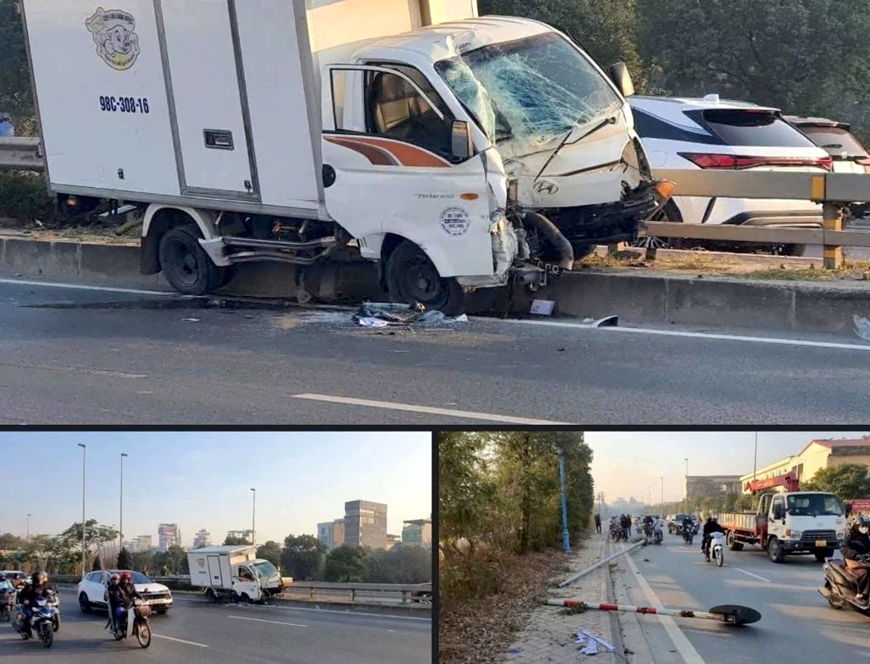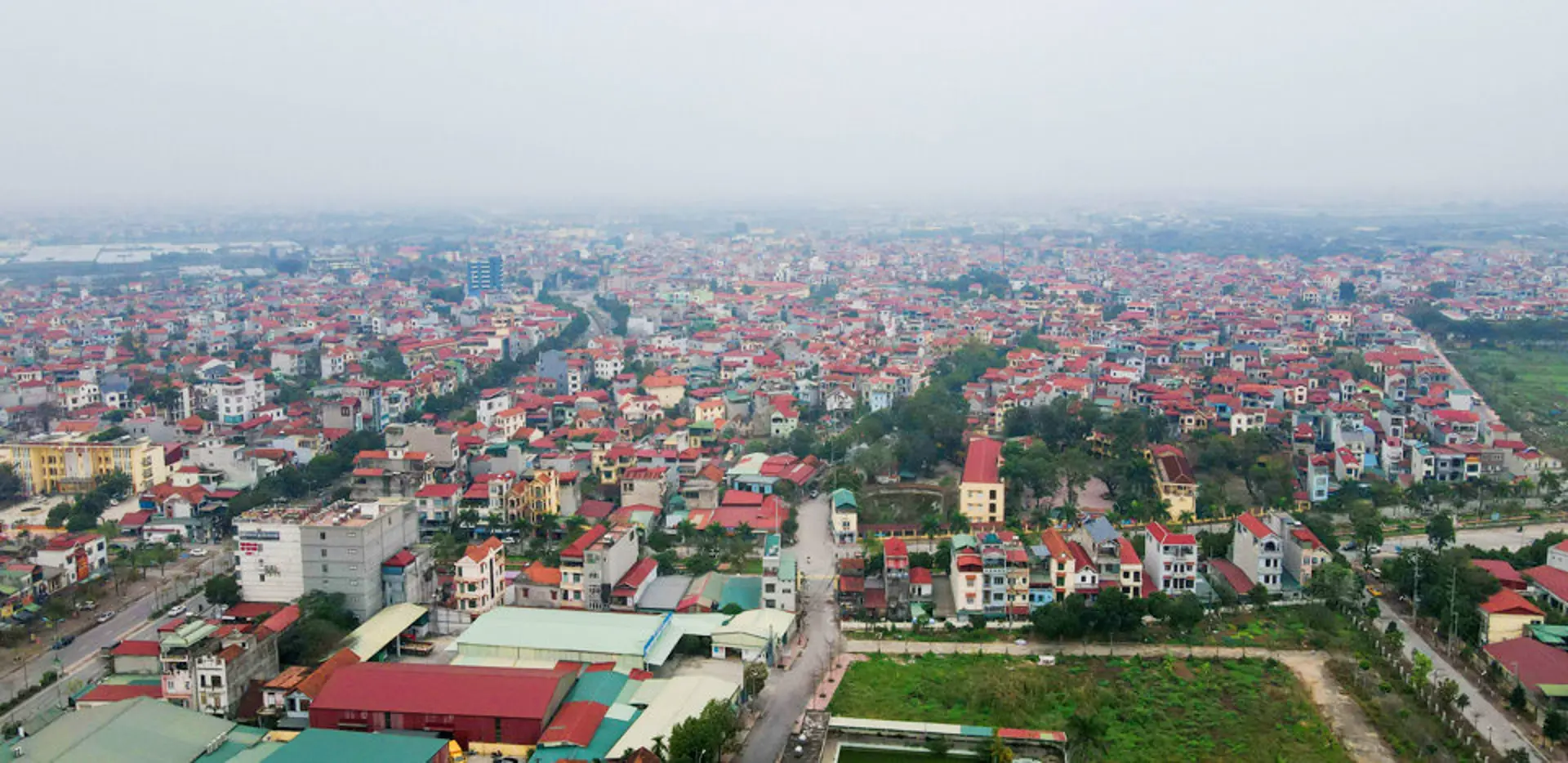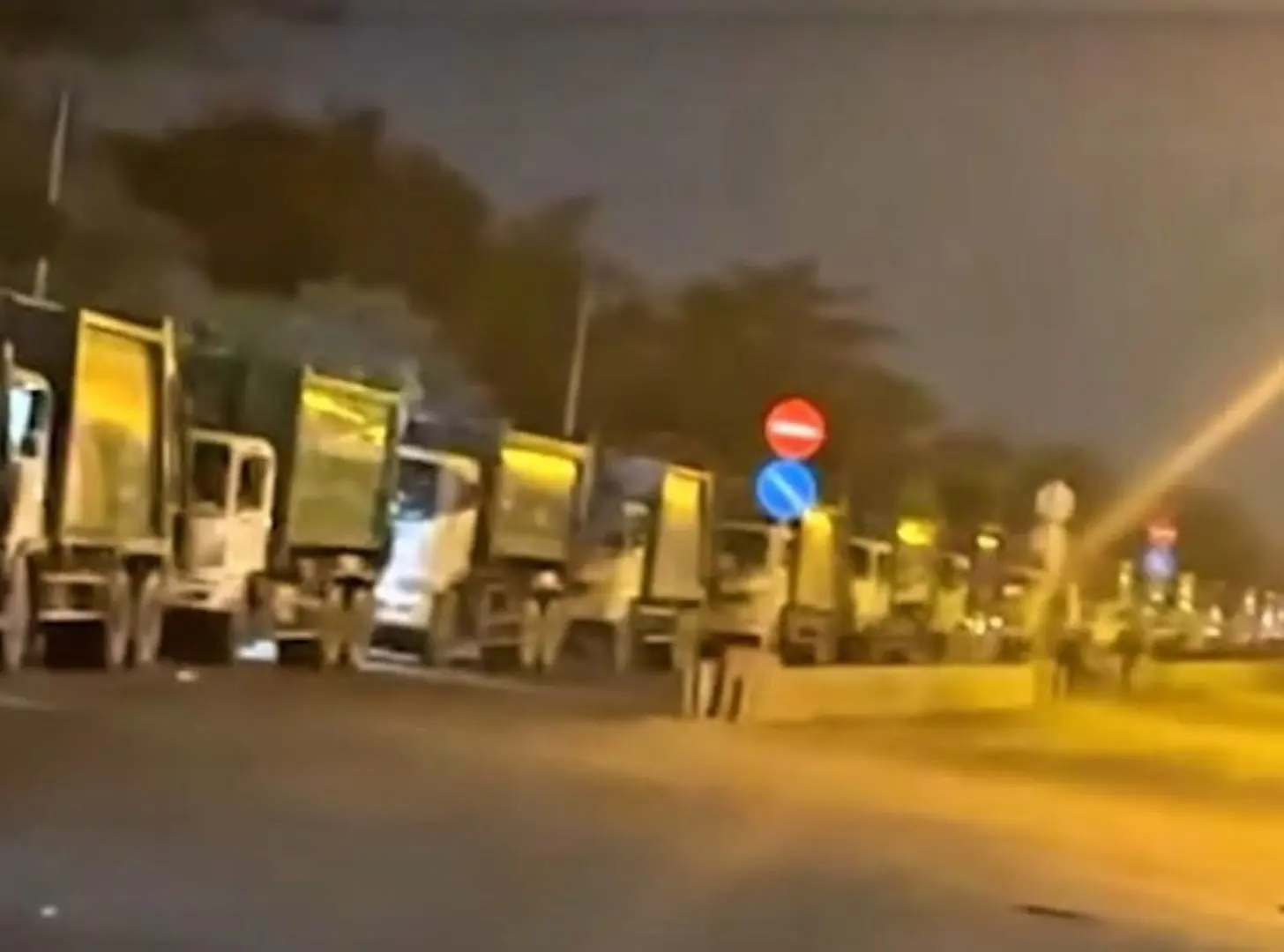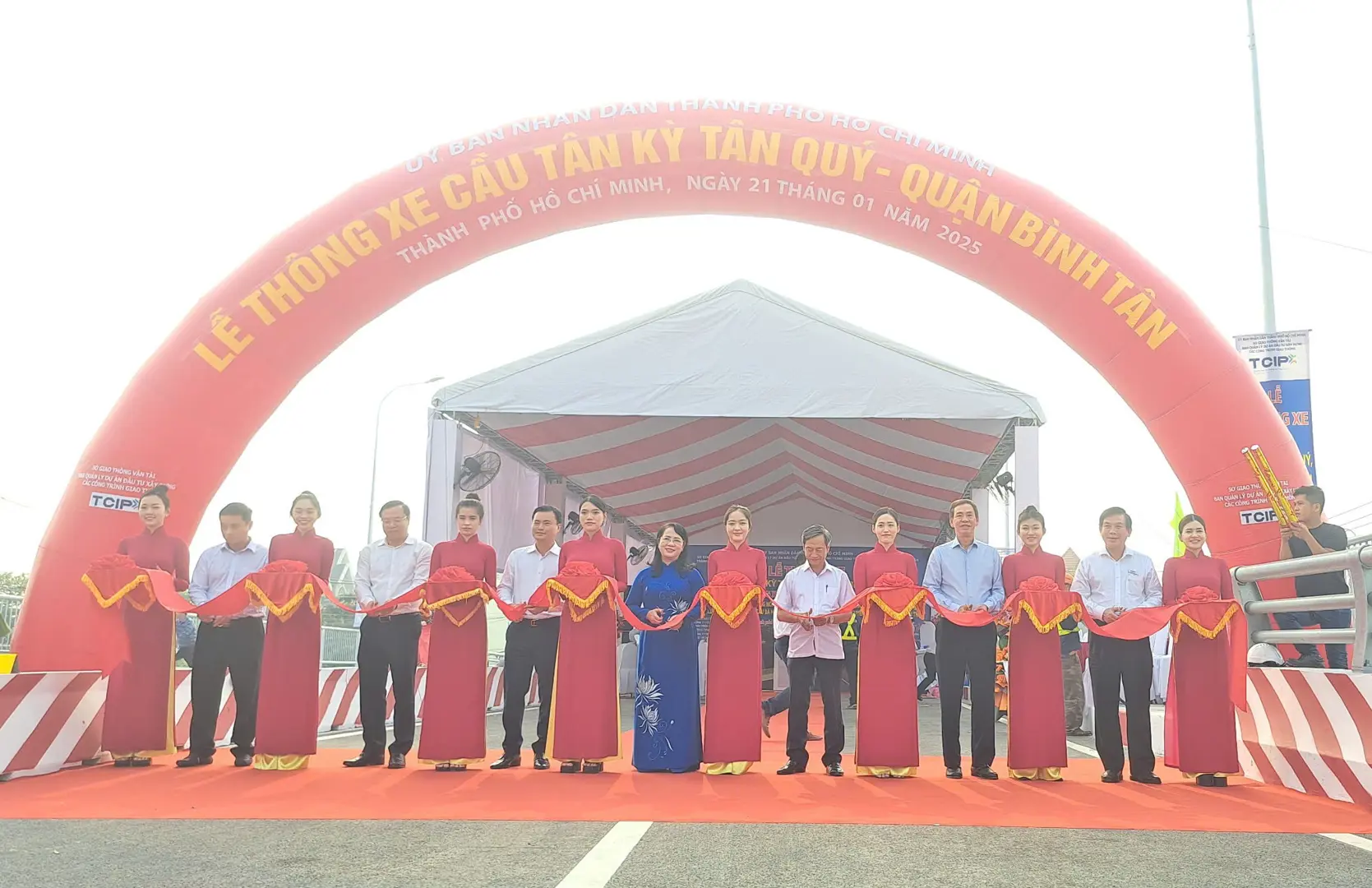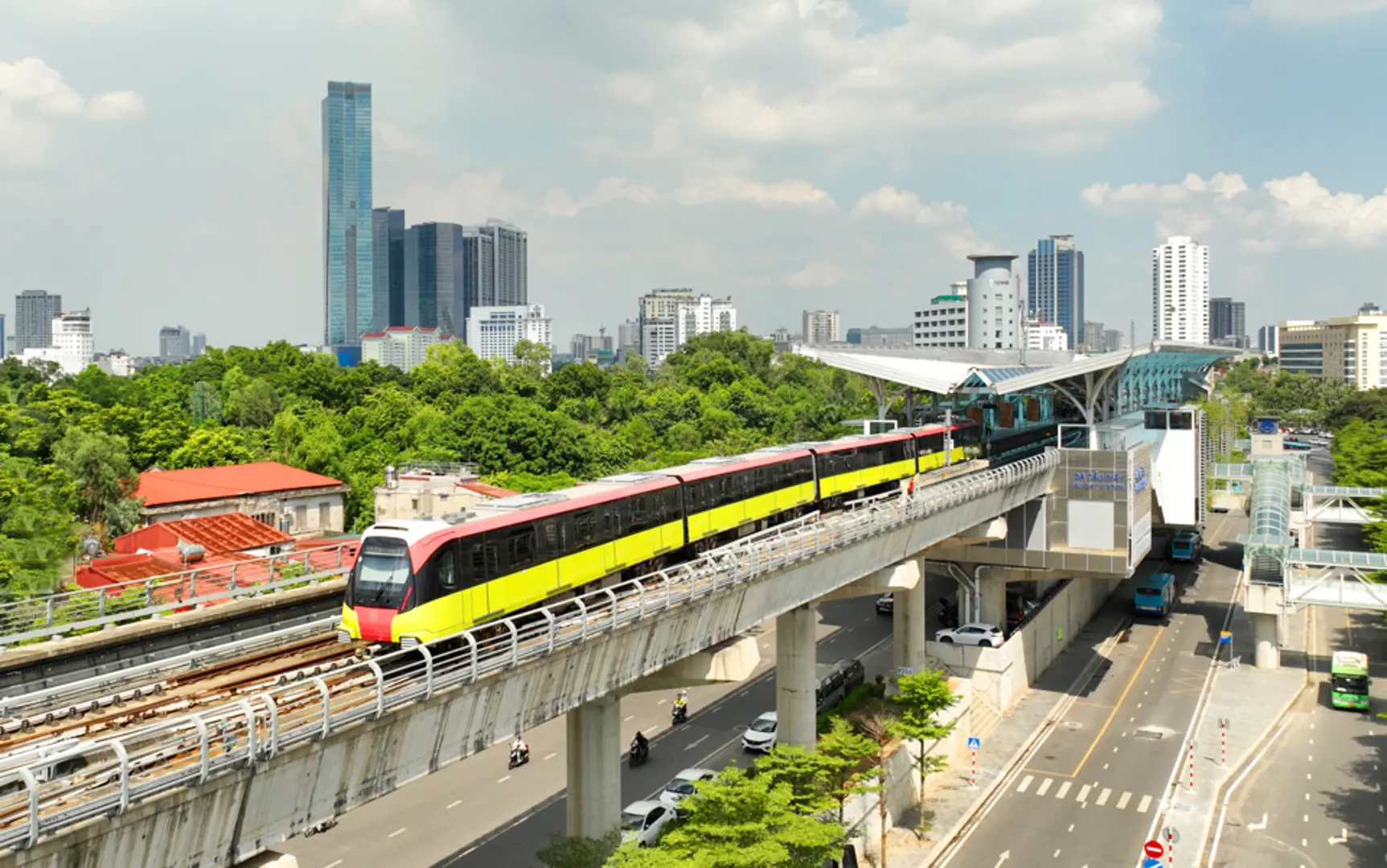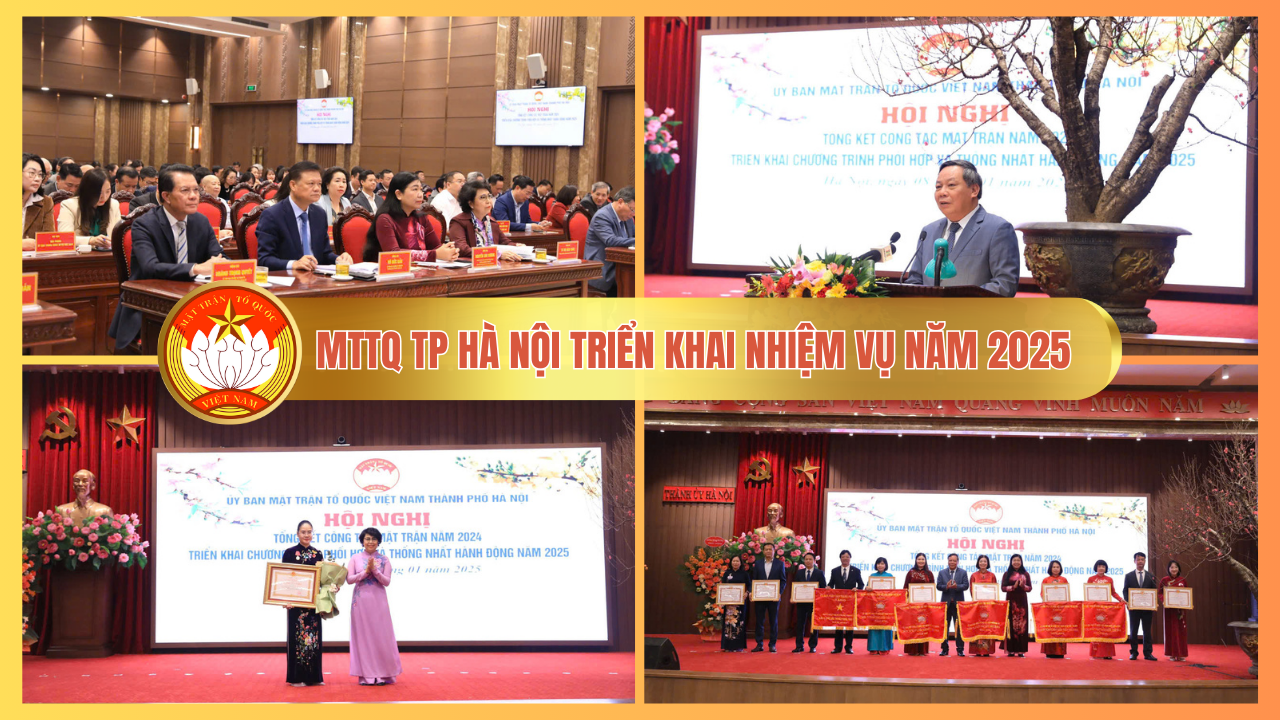Hanoi increases bus services to connect to metro
Hanoi's bus service is undergoing a major overhaul to encourage people to use public transport and leave their private vehicles at home.
The Hanoi Department of Transportation is planning to increase the number of bus services on Cat Linh-Ha Dong metro line from 43 to 50, with 65 bus stops along the route.
With this adjustment to the bus network, the Department of Transportation has said the number of metro passengers on the route from Yen Nghia station to Nga Tu So intersection is anticipated to increase by three or four times.
The bus lines to the Cat Linh-Ha Dong railway route will be able to serve 313,000-344,000 passengers daily, according to the department. The number of taxis operating along the route is expected to decrease as people take the bus to the metro station, reducing traffic congestion.
A train on the Cat Linh-Ha Dong metro line crosses Hoang Cau Lake in Hanoi. Photo: Pham Hung/The Hanoi Times |
The Hanoi Traffic Management and Operations Center has finalized a plan to connect 39 bus routes to the capital's second metro line at Nhon-Hanoi Station to provide convenience for passengers.
Both metro lines are also connected to the Bus Rapid Transit (BRT) No.01 by nine bus lines including 29, 49, 57, 05, 27, 38, 90, 105, and 09B.
Regarding the infrastructure connecting the Nhon - Hanoi station metro line, the Hanoi Department of Transport has installed 21 bus stops linking with metro shelters. Notably, all the bus stops are less than 50 meters from the Nhon-Hanoi metro stations.
The Hanoi Department of Planning and Investment reported that the progress of the city's second metro line has reached about 79%. In particular, the elevated section from Nhon to the S8 station (University of Transport) has reached 100% of the progress.
After receiving the system safety certification and system safety record appraisal report from the Vietnam Railway Authority (VNRA), the Appraisal Board will hold a meeting and issue a document approving the acceptance results of completing the elevated section of the project, which is expected to met the schedule for commercial operation in early July.
Vu Hoang Chung, a transportation expert from the Hanoi Metropolitan Railway Management Board (MRB), told The Hanoi Times that over the past twenty years, Hanoi's bus network has been systematically upgraded and improved in quality. More and more people are using buses to commute to work.
"The public transport system of a metropolis like Hanoi must have a metro as its backbone, with buses playing a supporting role. Hanoi has already launched metro line 2A [Cat Linh-Ha Dong railway line] and is preparing to launch line 3 [Nhon-Hanoi Station metro line]. The arrival of the urban railway will help the city authorities shape the future of buses and build a more appropriate and effective network," Chung said.
A Bus Rapid Transit (BRT) in Hanoi picks up passengers at Kim Ma station. Photo: Thanh Hai/The Hanoi Times |
Hanoi is expected to expand the bike-sharing network to enhance bus-to-bus connectivity. In particular, the city should develop a plan to attract investment in bus shelters to ensure maximum convenience and comfort for passengers.
"In addition, Hanoi plans to replace the old buses with new and high-quality vehicles and improve the application of science and technology. To make bus employees more friendly and connected to the public, it is crucial to raise their awareness," Chung emphasized.
According to Thai Ho Phuong, Deputy Director of the Hanoi Public Transport Management and Operation Center, the city's public transport network currently has 154 bus lines reaching every corner of the city.
“In the first half of 2024, the bus system has a ridership of around 250 million. Hanoi is currently renovating its bus fleet by introducing electric buses, developing a smart ticketing system, and connecting bus lines with the urban railway to make it more convenient for people to use public transport," Phuong said.
He added that the Cat Linh-Ha Dong railway line is now competitive with private vehicles in the one-kilometer distance. It competes with motorbikes, cars, and other vehicles in terms of time and cost. A flexible fare policy has been suitable for different passengers. Therefore, it is necessary to facilitate the interchange between subway lines and buses.
"We hope to get more feedback from the people to make adjustments to our service and improve the connectivity between urban railways and buses," Phuong told The Hanoi Times.

Hanoi sees alternative to private vehicles in metro lines
The capital plans to build 14 metro lines totaling 610km by 2065.

Underground tunnels between metro lines planned in Hanoi
The local authorities plan to spend VND113 billion (US$4.4 million) to build the tunnel connecting two metro lines.






